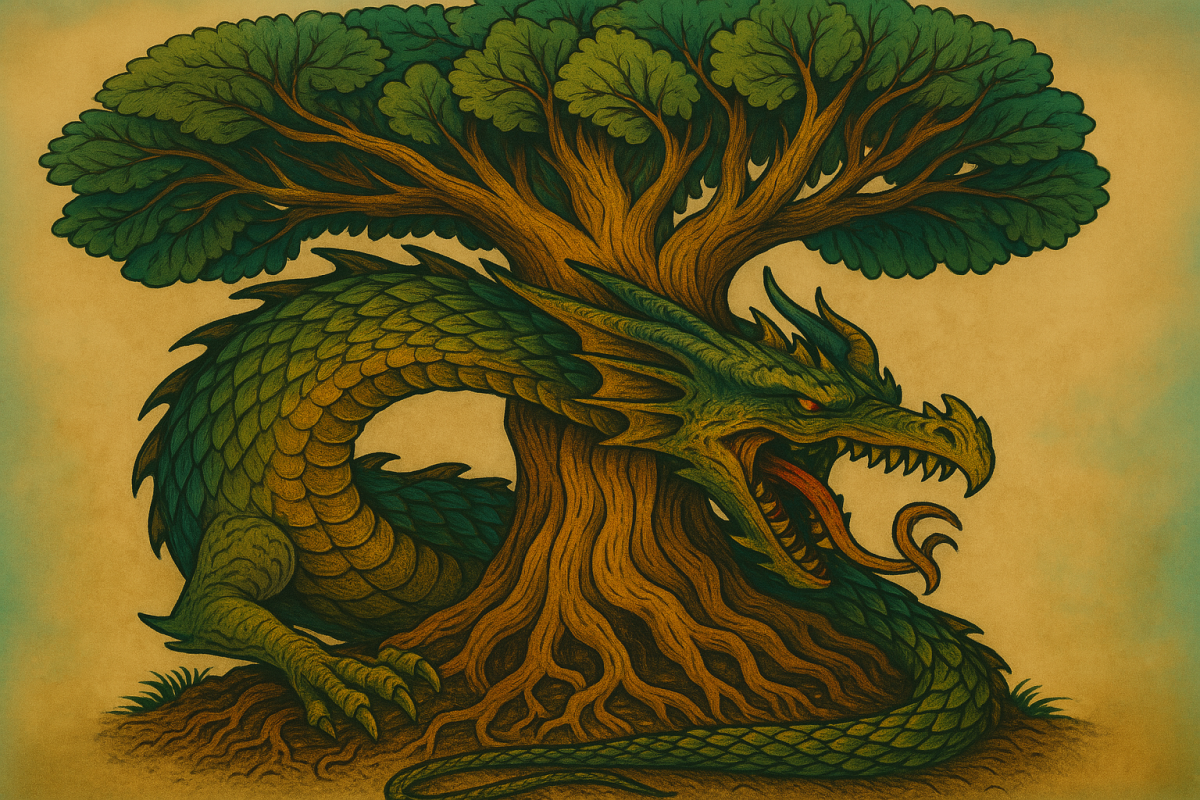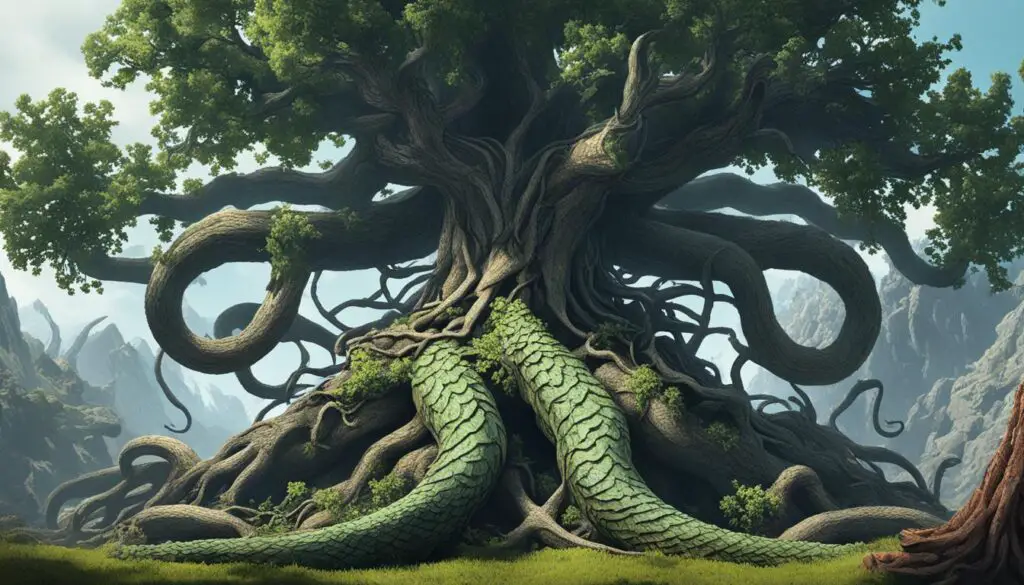Nordic Discovery
Nidhogg – The Dragon Gnawing at the Roots of Yggdrasil
Nidhogg – The Dragon Gnawing at the Roots of Yggdrasil in Norse Mythology
Explore the mythical creature Nidhogg – a symbol of corruption and darkness hidden beneath the World Tree in Norse cosmology.
Yggdrasil – The World Tree of Norse Myth
In Norse mythology, Yggdrasil is the immense ash tree that connects and sustains the Nine Realms of existence, including:
-
Asgard – Realm of the gods
-
Midgard – Realm of humans
-
Niflheim – Realm of ice, darkness, and death
Yggdrasil is the spine of the universe, a living axis around which all life and order revolve.
Nidhogg – The Dragon That Corrupts the Roots
Nidhogg (Old Norse: Níðhöggr) is a serpentine dragon or monstrous creature that dwells beneath Yggdrasil, at the spring of Hvergelmir in Niflheim. His sole purpose: to gnaw at the roots of the World Tree, slowly degrading its foundation.
🔥 Symbolic role:
-
Personification of decay and entropy
-
An ever-present force of corruption
-
The dark counterbalance to divine order
Nidhogg as the Punisher of Souls
Nidhogg is more than just a destructive force. In some Norse poems, he is said to chew on the corpses of the wicked in Helheim, the underworld:
-
Murderers, traitors, and oath-breakers are fed to him
-
He enforces a dark justice, gnawing at souls as well as roots
This dual role makes him not only a destroyer, but also a judge of the damned, operating in the shadows of the cosmos.
The Feud: Nidhogg, the Eagle, and the Squirrel Ratatoskr
Atop Yggdrasil lives a mighty eagle, symbolizing wisdom and divine perspective. At its roots lurks Nidhogg, the symbol of destruction.
Between them runs Ratatoskr, a mischievous squirrel that carries insulting messages and venomous gossip between the two – fueling a timeless cosmic rivalry.
This feud reflects the perpetual tension between enlightenment and entropy, between growth and decay.
Nidhogg’s Role in Ragnarok – The End of the World
In the final apocalyptic battle of Ragnarok, Nidhogg is foretold to:
-
Rise from the depths, bringing with him corpses and chaos
-
Contribute to the collapse of the Nine Realms
-
Symbolize the final breakdown of natural order before rebirth
Though not a main combatant like Fenrir or Loki, Nidhogg’s emergence signals the inevitability of total destruction..
Deeper Meaning – Nidhogg as a Symbol of Inner Darkness
Nidhogg isn’t just a mythological monster. He represents the inner rot that gnaws away at even the strongest foundations:
-
Negative emotions and toxic thoughts
-
Lingering guilt or destructive habits
-
The slow erosion of personal or societal values
In this light, Nidhogg becomes a mirror of the human psyche – a reminder that every light casts a shadow, and that confronting darkness is part of growth.
Nidhogg in Popular Culture
This ancient Norse creature lives on in modern media, often reimagined in new and terrifying forms:
-
God of War – A majestic and ancient serpent guarding realms
-
Final Fantasy, Darksiders – As apocalyptic dragons or corrupted beasts
-
Viking-inspired tattoos – As a symbol of inner struggle, death, and rebirth
Conclusion: To Understand the Light, One Must Face the Darkness
Without Nidhogg, Yggdrasil would have no opposition, no tension, no balance. He is a necessary evil – not glorified, but essential to the cosmic cycle of life, death, and renewal.
In Viking belief, decay and destruction are not the end – they are part of the eternal cycle that allows the world to be born anew.
To acknowledge Nidhogg is to understand that true strength includes the courage to face the shadows.


